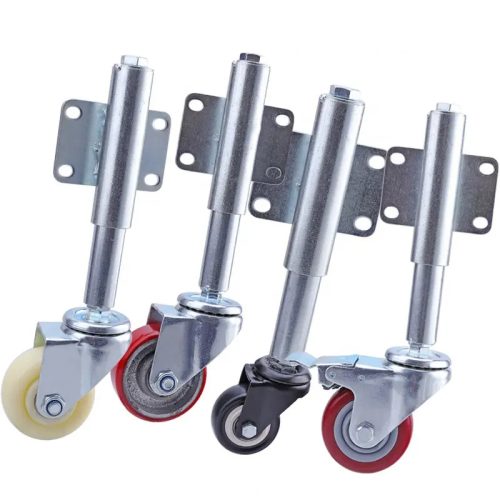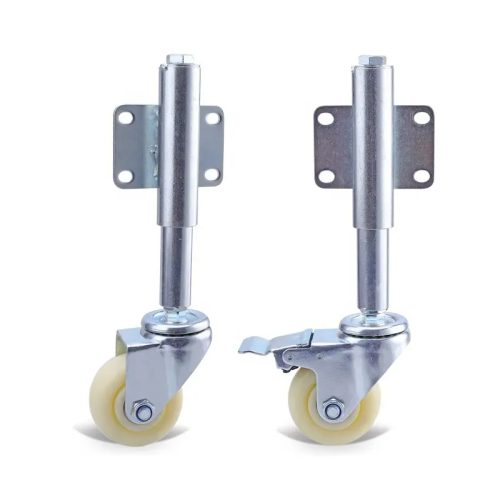Introduction: Spring-loaded casters, often overlooked in industrial settings, play a vital role in various industries. These small yet robust components offer numerous advantages, making the movement of heavy equipment and goods more manageable. In this article, we will delve into the various benefits of spring-loaded casters in industrial applications.
- Load Balancing: One of the primary advantages of spring-loaded casters is their outstanding load balancing capability. Their design allows them to provide elasticity under heavy pressure, reducing vibrations and impacts. This is particularly crucial when transporting fragile or expensive equipment. Whether inside a factory or warehouse, spring-loaded casters ensure that the load remains stable, minimizing the risk associated with uneven weight distribution.
- Vibration and Noise Reduction: Industrial environments are typically filled with noisy machinery and equipment. Spring-loaded casters can play a role in reducing vibration and noise. They act as shock absorbers, absorbing and mitigating vibrations caused by uneven surfaces or imbalanced loads, creating a quieter work environment and reducing noise exposure for employees.
- Enhanced Maneuverability: Spring-loaded casters offer added maneuverability, making it easier to move large equipment. Whether it’s equipment within a factory or on the manufacturing line, these components can handle direction changes, turns, and other maneuverability challenges with ease, ensuring smoother and more efficient operations.
- Prolonged Equipment Lifespan: By reducing vibrations and impacts, spring-loaded casters can extend the lifespan of equipment. With less exposure to intense vibrations and impacts during operation, components and structures are less likely to wear out compared to situations without spring-loaded casters. This reduces the need for maintenance and replacements.
- Improved Safety: Safety is paramount in industrial environments. Spring-loaded casters help reduce the risk of accidents by providing stable load balancing, reducing vibrations and noise, and enhancing maneuverability. This, in turn, increases workplace safety, lowering the occurrence of workplace accidents, and decreasing the likelihood of personal injuries and equipment damage.
Conclusion: In summary, spring-loaded casters offer multiple benefits in industrial applications. They provide load balancing, reduce vibrations and noise, enhance maneuverability, prolong equipment lifespan, and improve safety. These small yet powerful components not only boost operational efficiency but also help lower maintenance and operational costs, making them indispensable in industrial settings. When selecting the right spring-loaded casters, careful consideration of specific application requirements is essential to fully realize their potential.


